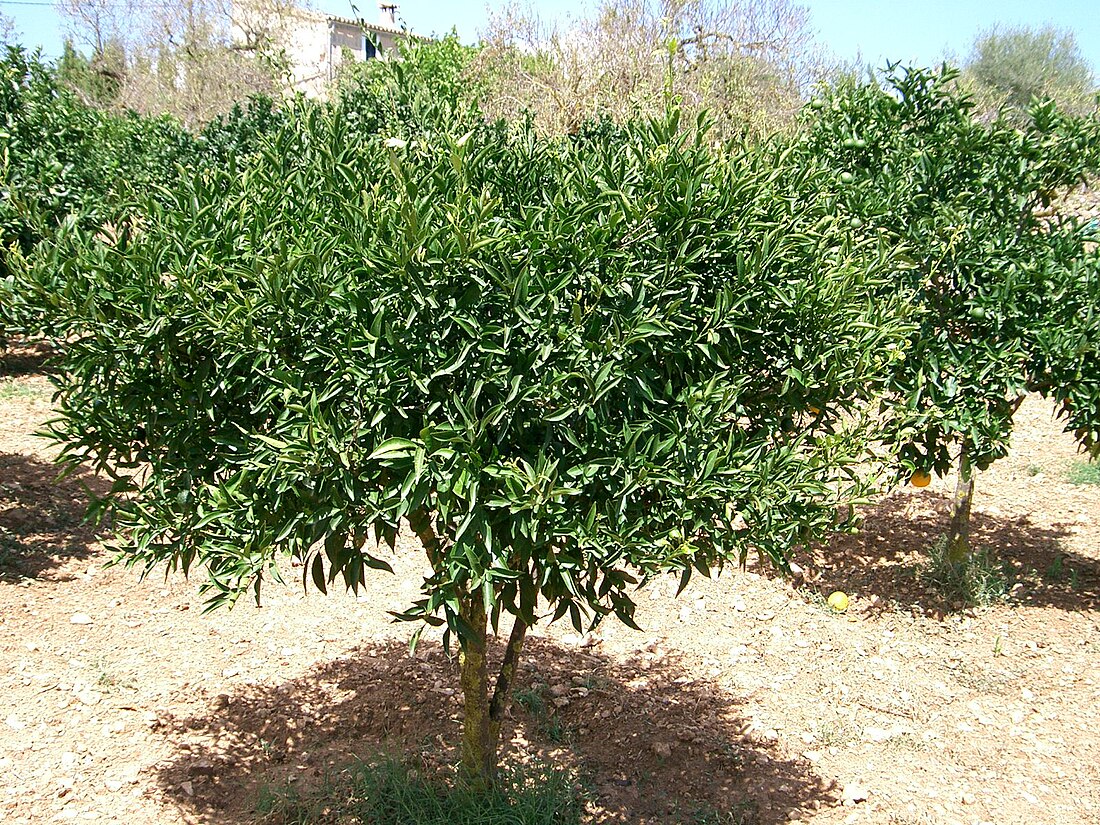Top Qs
Timeline
Chat
Perspective
Citrus × deliciosa
Citrus fruit and plant From Wikipedia, the free encyclopedia
Remove ads
Citrus × deliciosa (thorny (Australia), amarillo, beladi, Willowleaf Mandarin, Mediterranean Mandarin[1]) is a citrus hybrid mandarin orange with just under 6 % pomelo ancestry.[2] It is related to the ponkan.[3][4]
It has been widely grown around the Mediterranean since it appeared in Italy (between 1810 and 1818), but was not found in the orient until it was exported there.[1] It is one of the most commercially important citrus. Its sweet fruit is eaten, its rind oil is used to flavour food and drinks, and petitgrain oil is extracted from the pruned leaves.[1] Its flowers (particularly petals) are also rich in essential oils.[5]
Remove ads
Cultivars
- Avana
- Emperor
- Yousef Effendi
- Comuna/commune
- Natal (Mexico)
- Paterno
- Willowleaf (in USA)
- Setubalense

Hybrid descendants
the Citrus × deliciosa is a parent of some hybrid cultivars like:
- 'Clementine' (Citrus × deliciosa × unknown sweet orange).
- 'Kinnow', (Citrus × deliciosa × King tangor)
- 'Wilking', (Citrus × deliciosa × King tangor)
- 'Encore', (Citrus × deliciosa × King tangor)
- 'Temple', (Citrus × deliciosa × unknown sweet orange)
- 'Cravo', (Citrus × deliciosa × unknown sweet orange)
- 'Amoa 8', (Citrus × deliciosa 'Avana' cultivar x Citrus × sinensis 'Moro' cultivar)
- 'Allspice' tangelo, (Citrus × deliciosa 'Willowleaf' cultivar x Citrus × paradisi 'Imperial' cultivar)
- 'Pearl' tangelo, (Citrus × deliciosa 'Willowleaf' cultivar x Citrus × paradisi 'Imperial' cultivar)
Remove ads
References
Wikiwand - on
Seamless Wikipedia browsing. On steroids.
Remove ads

